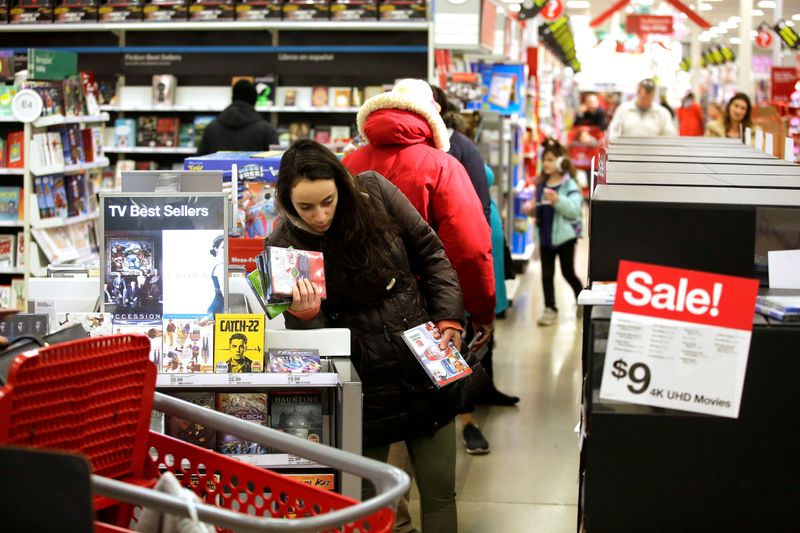By Lucia Mutikani
WASHINGTON (Reuters) - U.S. consumer prices increased solidly in November, which together with labor market strength could support the Federal Reserve's intention not to cut interest rates again in the near term after reducing borrowing costs three times this year.
The report from the Labor Department on Wednesday also showed underlying inflation firming last month. It came as Fed officials were due to conclude a two-day policy meeting. The U.S. central bank is expected to keep rates on hold. It signaled a pause in October in the easing cycle that started in July when it cut rates for the first time since 2008.
"There are not worrisome deflation undercurrents in this economy and Fed officials do not need to cut interest rates further to boost economic demand," said Chris Rupkey, chief economist at MUFG in New York.
The consumer price index rose 0.3% last month as households paid more for gasoline and food prices increased for a third consecutive month. The CPI advanced 0.4% in October. In the 12 months through November, the CPI increased 2.1% after gaining 1.8% in October.
Economists polled by Reuters had forecast the CPI climbing 0.2% in November and rising 2.0% on a year-on-year basis.
Excluding the volatile food and energy components, the CPI rose by 0.2%, matching October's increase. The so-called core CPI was up by an unrounded 0.2298% last month compared to 0.1572% in October. The core CPI was lifted by gains in healthcare and prices of used cars and trucks, recreation and hotel and motel accommodation.
In the 12 months through November, the core CPI increased 2.3% after a similar gain in October.
The Fed tracks the core personal consumption expenditures (PCE) price index for its 2.0% inflation target. The core PCE price index rose 1.6% on a year-on-year basis in October and has undershot its target this year. November PCE price data will be published later this month.
The dollar was little changed against a basket of currencies after the CPI data, while U.S. Treasury prices dipped.
RISING RENTS
November's firmer inflation readings followed a report last Friday showing the economy added a robust 266,000 jobs in November and the unemployment rate fell back to 3.5%, its lowest level in nearly half a century. Other data on housing, trade and manufacturing have also been relatively upbeat, and suggested the economy was growing at moderate speed rather than stalling.
In November, gasoline prices rose 1.1% after rebounding 3.7% in October. Food prices edged up 0.1%, rising for a third straight month. Food consumed at home gained 0.1%.
Owners' equivalent rent of primary residence, which is what a homeowner would pay to rent or receive from renting a home, increased 0.2% last month, matching October's rise.
The rent index gained 0.3% after edging up 0.1% in October, which was the smallest gain since April 2011. It was lifted by a 1.1% rebound in the cost of hotel and motel accommodation after tumbling 3.8% in October.
Healthcare costs rose 0.3% in November after surging 1.0% in October, which was the most since August 2016. The cost of hospital services rose 0.3% last month and prices for doctor visits gained 0.1%. But prices for prescription medication slipped 0.1% after surging 1.8% in October.
Apparel prices nudged up 0.1% last month after declining 1.8% in October. Used motor vehicles and trucks prices increased 0.6% after rising 1.3% in October. The cost of recreation goods and services increased 0.4%, boosted by rises in the prices of cable and satellite television services and sporting goods.

But new vehicle prices fell for a fifth straight month, likely because of deep discounting by automakers trying to get rid of stocks of older models. There were also decreases in the prices of airline tickets and motor vehicle insurance. The cost of household furnishing and operations was unchanged.